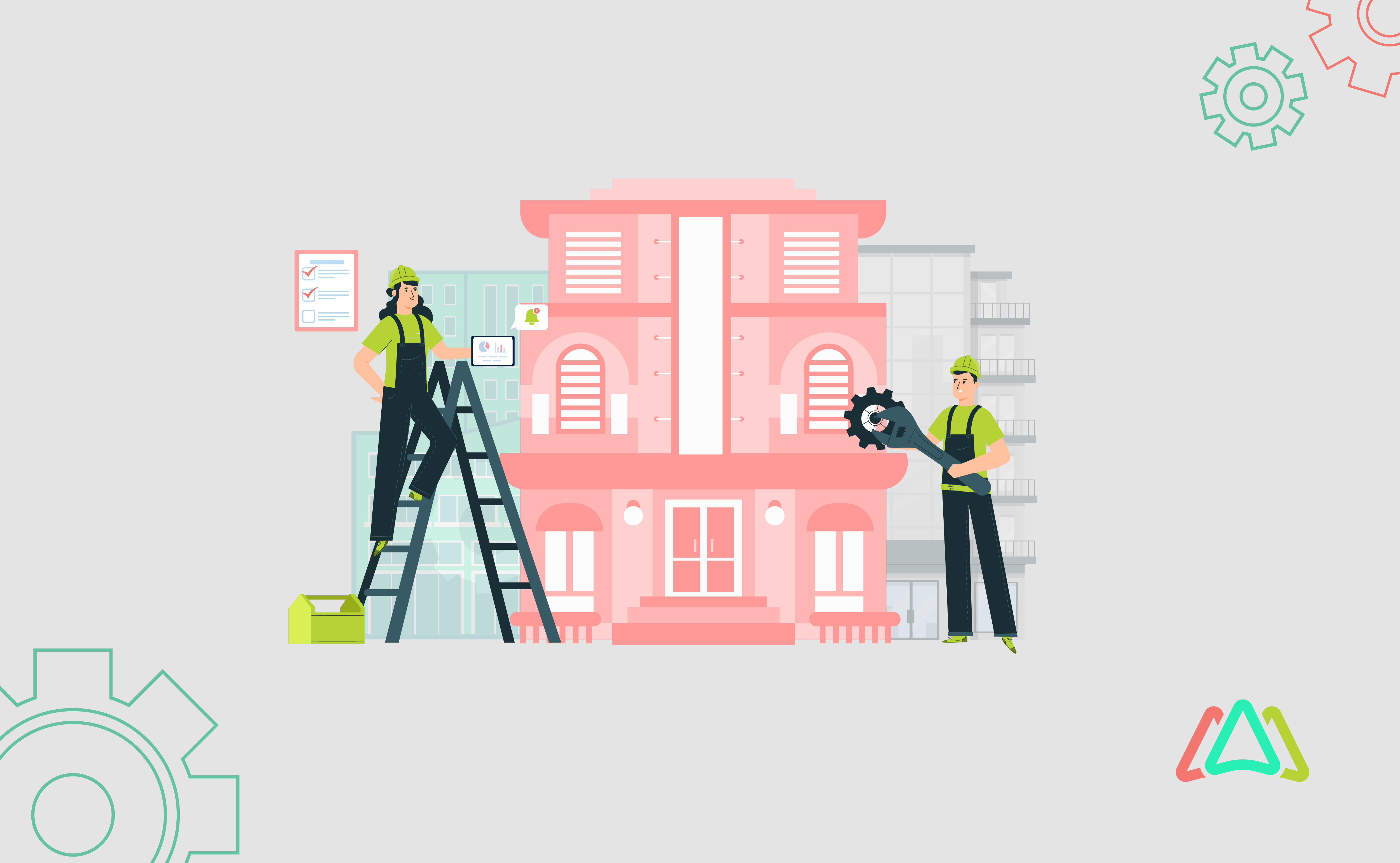
Using CMMS Software for Small Business Facility Maintenance
Introduction
Effective facility maintenance plays a key role in ensuring smooth operations and customer satisfaction in small businesses. Proper maintenance not only enhances the longevity and reliability of assets but also contributes significantly to safety, regulatory compliance, and overall cost management. However, managing maintenance manually can be challenging and time-consuming. This is where Computerized Maintenance Management Systems shine. CMMS software streamlines maintenance activities by centralizing work order management, scheduling preventive maintenance tasks, optimizing asset management, and providing insightful analytics.
Understanding CMMS Software
CMMS software offers a set of features to streamline facility maintenance for small businesses. Work Order Management allows efficient creation, assignment, and tracking of maintenance tasks, ensuring timely issue resolution. Scheduling with Preventive Maintenance automates routine inspections and maintenance, reducing unexpected breakdowns and extending asset lifespan. Asset Management centralizes information on equipment, machinery, and facilities, tracking maintenance histories and performance metrics for informed decision-making. Inventory Control maintains optimal stock levels of spare parts, minimizing downtime. Reporting and Analytics provide insights into asset performance, maintenance costs, and productivity, empowering data-driven decisions to enhance operational efficiency and cost-effectiveness.
Benefits of CMMS Software for Small Businesses
CMMS software offers numerous benefits for small businesses, significantly enhancing their facility maintenance operations.
Improved Efficiency and Productivity:
CMMS software streamlines maintenance processes by automating work orders, scheduling preventive maintenance, and optimizing resource allocation. This leads to faster resolution of issues and reduced downtime, allowing staff to focus on other critical tasks.
Cost Savings and Budget Management:
By minimizing unplanned breakdowns and optimizing inventory management, CMMS reduces maintenance costs and helps businesses stick to their budget. The software's analytics tools provide insights into maintenance spending, enabling better financial planning and cost-effective decision-making.
Enhanced Asset Longevity and Reliability:
Regular preventive maintenance scheduled through CMMS extends the lifespan of assets and ensures they operate efficiently. This proactive approach reduces the likelihood of costly repairs and replacements, maintaining high levels of reliability.

Regulatory Compliance and Safety:
CMMS helps small businesses comply with industry regulations and safety standards by keeping detailed records of maintenance activities and inspections. This reduces the risk of non-compliance penalties and ensures a safer environment for employees and customers.
Better Customer Experience and Satisfaction:
Efficient facility maintenance directly impacts customer satisfaction. For businesses like restaurants, retail outlets, property management, and resorts, well-maintained facilities and equipment ensure a pleasant experience for customers, leading to positive reviews, repeat business, and long-term success.
In summary, CMMS software is a promising investment for small businesses. It can drive efficiency, reduce costs, and enhance asset reliability and customer satisfaction.
Application of CMMS in Different Small Business Sectors
CMMS software optimizes maintenance operations across various small business sectors, enhancing efficiency, safety, and regulatory compliance. Here are a few key business sectors where operational efficiency can be maximized with CMMS.
Restaurants

Recent expert discussions emphasize the critical need for CMMS software in the restaurant industry. In this context, CMMS software plays an essential role in maintaining high operational standards. It streamlines kitchen equipment maintenance by scheduling regular inspections and repairs, ensuring that appliances function efficiently, and minimizing downtime (Food Engineering Magazine, 2023). CMMS also manages HVAC and refrigeration systems—important for food safety and customer comfort—by automating maintenance schedules and tracking performance metrics. Additionally, the software helps ensure sanitation and safety compliance by documenting cleaning routines, pest control measures, and safety inspections (RFMA, 2023). By optimizing these maintenance activities, CMMS enhances the reliability of critical systems, supports health and safety standards, and ultimately contributes to a superior dining experience for customers.
Resorts
In resorts, CMMS software is essential for maintaining high standards of service and facility management. It streamlines guest room maintenance by scheduling regular inspections and repairs, ensuring rooms are always in top condition. CMMS also optimizes pool and spa management, automating routine checks and chemical treatments to maintain safety and hygiene. Additionally, it enhances landscaping and groundskeeping by scheduling regular upkeep tasks, ensuring the resort's exterior remains pristine. By centralizing these maintenance activities, CMMS helps resorts reduce downtime, improve guest satisfaction, and maintain a consistently high level of service.
For a more in-depth look at the benefits of CMMS software for the hotel and resort industry, including streamlined maintenance management, improved guest experience, compliance and safety, and detailed analytics and reporting, read our detailed article on the Benefits of CMMS Software for the Hotel and Resort Industry.
Healthcare Clinics and Retirement Centers
In healthcare clinics and retirement centers, CMMS software ensures high standards of maintenance and safety. It schedules and tracks medical equipment maintenance, ensuring reliability and compliance with healthcare regulations. CMMS also assists facility management by managing facility cleanliness and safety by automating cleaning routines and safety inspections. For residents' comfort and well-being, the software optimizes the maintenance of HVAC and environmental controls, which maintain ideal living conditions. By centralizing these tasks, CMMS minimizes equipment downtime, enhances safety, and ensures a comfortable environment for residents and patients, contributing to overall health and satisfaction while supporting regulatory compliance and operational efficiency. According to a report by Grand View Research, the global healthcare computerized maintenance management system market size was estimated at USD 211.6 million in 2022 and is expected to grow at a compound annual growth rate (CAGR) of 11.25% from 2023 to 2030. This growth is driven by an increasing focus on preventive maintenance of medical equipment and reducing downtime (Grand View Research, 2023).
Small Manufacturing Plants

In small manufacturing plants, CMMS software is essential for maintaining equipment and machinery. It schedules regular maintenance and repairs, reducing downtime and extending the lifespan of critical assets. CMMS also enhances production line efficiency by tracking performance metrics and identifying bottlenecks, allowing for timely interventions and adjustments. Additionally, the software supports safety and compliance by managing safety inspections, maintaining records of maintenance activities, and ensuring adherence to industry regulations. By centralizing maintenance operations, CMMS improves operational efficiency, minimizes disruptions, and helps maintain a safe working environment, ultimately contributing to higher productivity and better overall performance.
Car Repair Shops and Garages
In car repair shops and garages, CMMS software significantly enhances operational efficiency and safety. It schedules regular maintenance for equipment and tools, ensuring they remain in optimal working condition and minimizing costly downtime. CMMS also manages facility cleanliness and safety by automating cleaning routines and safety inspections, creating a safer work environment for technicians. Additionally, it streamlines inventory and parts management by tracking stock levels, ordering parts automatically when needed, and reducing delays in repairs. By centralizing these functions, CMMS supports smooth operations, improves service quality, and enhances customer satisfaction through timely and efficient vehicle repairs.
Airbnbs
In Airbnbs (with multiple locations), CMMS software is essential for efficient property management and guest satisfaction. It streamlines property upkeep by scheduling regular maintenance tasks, ensuring everything is in working order, and reducing unexpected repairs. CMMS also supports quick turnaround and guest readiness by automating cleaning schedules and inspections, ensuring the property is always prepared for new guests. Additionally, it helps manage multiple properties by centralizing maintenance activities, tracking work orders, and providing real-time updates. This organized approach enhances operational efficiency and ensures a consistently high standard of service, ultimately leading to better reviews and increased bookings.
Agricultural Farms and Nurseries

In agricultural farms and nurseries, CMMS software is important for optimizing maintenance and ensuring smooth operations. It schedules regular maintenance for equipment and machinery, reducing downtime and prolonging their lifespan. CMMS also manages facility and greenhouse upkeep, automating routine tasks such as cleaning, inspections, and repairs to maintain optimal growing conditions. Additionally, the software manages work orders, enhances equipment ROI, maximizes uptime by minimizing unscheduled downtime, oversees spare parts inventory, maintains a centralized database, and ensures regulatory compliance. Recent research by Jurca, Vitkova, and Ales (2012) highlights the significant benefits of CMMS in agricultural settings, emphasizing notable improvements in efficiency and resource management. By prioritizing these maintenance activities, CMMS enhances efficiency, supports sustainable farming practices, and improves overall productivity, contributing to higher yields and better-quality produce.
Implementation of CMMS in Small Businesses
CMMS implementation in small businesses involves several key steps. Begin with thorough planning and preparation, assessing maintenance needs, and setting clear objectives. Ensure accurate data migration and system setup, configuring the system to match specific requirements. Provide comprehensive staff training and encourage adoption by highlighting CMMS benefits. Overcome common challenges like resistance to change by involving employees early and communicating benefits clearly. Manage budget constraints by prioritizing essential features and choosing scalable solutions. Address technical issues by selecting a reliable CMMS provider with strong customer support and conducting thorough testing before full deployment to ensure a smooth transition.
Tips for Maximizing the Use of CMMS Software

Maximize the use of CMMS software by regularly updating and maintaining the system to ensure optimal performance and data accuracy. Leverage data and analytics for informed decision-making, identifying trends, and optimizing maintenance strategies. Provide continuous training and improvement opportunities for staff to stay proficient with the system's features. Integrate CMMS with other business systems, such as inventory management and accounting, for seamless operations and improved efficiency. Regular updates, data-driven insights, ongoing training, and system integration will help your business fully utilize CMMS capabilities, leading to enhanced productivity and better maintenance outcomes.
Conclusion
In conclusion, CMMS software significantly enhances facility maintenance for small businesses by improving efficiency, reducing costs, and ensuring safety compliance. Embracing CMMS streamlines maintenance operations extends asset lifespan, and boosts customer satisfaction. By leveraging its benefits, small businesses can achieve long-term operational success and growth. Invest in CMMS to optimize your maintenance processes and secure a competitive edge in your industry.
TABLE OF CONTENTS
Keep Reading
Ever find yourself checking into a luxury hotel and expecting a relaxing stay, only to find a ...
11 Apr 2025
Organizations are witnessing swift changes in the business environment and confronting a ...
8 Apr 2025
Last month, news outlets and the entire internet was abuzz with the return of NASA astronauts ...
3 Apr 2025
What comes first - CMMS or predictive maintenance? If your answer is either, it is correct. ...
28 Mar 2025
Artificial intelligence (AI) talk has become commonplace. Today, engaging in business-focused ...
27 Mar 2025
Imagine a world where machines predict, diagnose, and fix their issues before they fail. This ...
25 Mar 2025
A facility maintenance plan is at the core of a facility’s operations. This organized ...
21 Mar 2025
Think of managing your maintenance operations like managing a championship sports team. Just ...
21 Mar 2025
The maintenance sector is battling a severe talent shortage that threatens to undermine ...
7 Mar 2025
Manufacturing maintenance is the backbone of industrial efficiency, ensuring machines run ...
5 Mar 2025
No one likes playing a guessing game when equipment breaks down. Yet, maintenance teams often ...
4 Mar 2025
The size of the preventive maintenance software market is discussed in millions of dollars, ...
4 Mar 2025
The organizational structure and corporate hierarchy vary from company to company. Large ...
28 Feb 2025
Maintenance procedures are essential for ensuring the longevity and reliability of machinery ...
21 Feb 2025
Sustainability is no longer just a buzzword; it's a critical component of corporate social ...
20 Feb 2025
A Computerized Maintenance Management System (CMMS) relies on accurate, well-organized data ...
18 Feb 2025
In an era where technology drives operational efficiency, Computerized Maintenance Management ...
14 Feb 2025
A Computerized Maintenance Management System (CMMS) is a key component of modern maintenance ...
13 Feb 2025
Introduction Maintenance management is the foundation of maintenance operations in industries ...
11 Feb 2025
Introduction A Computerized Maintenance Management System (CMMS) is software designed to help ...
7 Feb 2025





